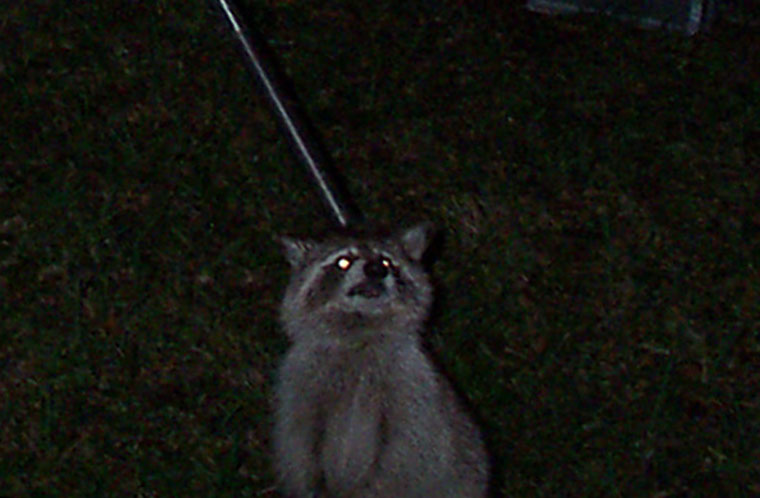- info@wildlife-removal.com
Call us for help in your town
Wildlife Removal Education
A Guide to Catching a Raccoon With a Snare Pole Trap
Need raccoon removal in your hometown? We service over 500 USA locations! Click here to hire us in your town and check prices - updated for year 2020.
In some cases, conventional methods of raccoon removal just don't work. Such cases may include a raccoon that has fallen down into a wall cavity and cannot get back out again, or maybe even a family of raccoons - a mother and her kits - that have explored your roof in a little more detail and found themselves stuck down the chimney. For the record, that's why you should always have some sort of cover on the chimney, to prevent wild animals and pets from falling down there. They are remarkably hard to get back out again.

It is not recommend that you attempt to use a snare pole to remove a raccoon unless you have been trained in how to do so. The repercussions of getting it wrong could entail the animal dying; not quite the humane approach we're sure you were hoping for.
Any animal that you try to trap with a snare pole is going to fight back with all its might, and if you have more than one raccoon to capture, the fight is going to get very exhausting for you before long. The struggle could result in the snare getting too tight, starving the animal of the oxygen it needs to survive. The snare could also tear into the skin, fur, and flesh of the animal, causing pain and wounds that require veterinary treatment to put right.
A snare pole trap for raccoons is designed to be used as a last resort - when all other methods have failed. A raccoon in a chimney, for example, has few ways of being resolved, with the exception of using a snare pole, but other nesting or trapped-points have easier methods of removal. Exclusion devices can be used in conjunction with something like animal eviction to force out raccoons that are old enough to leave the comfort and safety of the nest. In other occasions, a large enough trap might just safely encapsulate the little family, ready and waiting for you to device what to do next.
Of course, the one thing that you simply cannot forget about when talking about snare traps for raccoons is that removing the snare pole itself will usually involve you getting closer to the animal that we would recommend. You must remember that this is a wild animal that can carry the rabies virus - a virus that can be passed on to you and your pets. There are other disease threats too, some of which involve direct contact with the animal, some of which can be potentially airborne, and some of which are tiny eggs that you can't see, but are easily ingested. That's raccoon roundworm eggs by the way; they're frequently found in the droppings or “skat” of raccoons.
There are ways that you can “indirectly” use a snare pole to try and encourage the safe and humane removal of a raccoon or family of raccoons. You can use the pole as a “poking” device, essentially poking the animals to the direction that you'd like them to travel. This doesn't always work. Raccoons are unpredictable and feisty, to say the least. If the animals are the vicinity of a trap that you have set up; however, you may find that the pole is all the encouragement the creature needs in order to walk right on in.
If you are looking at resorting to using a snare pole to get rid of raccoons, first ask yourself how much you know about using the thing you have in your hands. If you can't guarantee that the job will be carried out safely, effectively, quickly, and relatively painlessly, for all parties involved, you probably shouldn't be doing it.
Go back to the Raccoon Removal page, or learn tips to do it yourself with my How to Get Rid of Raccoons guide.


















